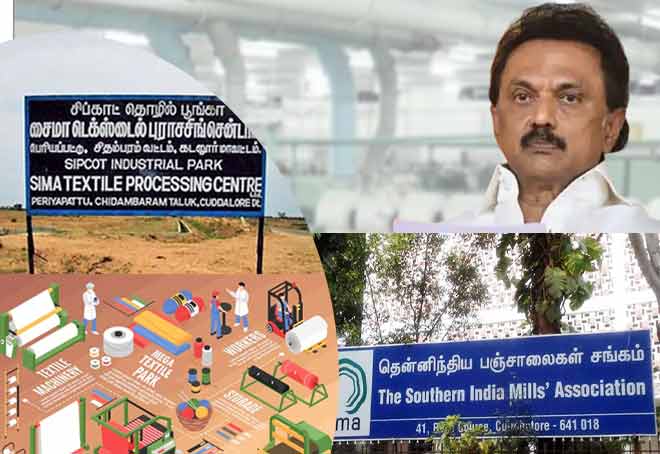SIMA urges Chief Minister to revive Cuddalore Textile park project
Updated: Nov 22, 2022 12:07:48pm

SIMA urges Chief Minister to revive Cuddalore Textile park project
Chennai, Nov 22 (KNN) Even after approval from Central and State governments the textile processing park in Cuddalore remains on drawing board due to opposition from a section of the people.
The Southern India Mills’ Association (SIMA) has urged Chief Minister M.K. Stalin to intervene over this matter.
The Central government has now indicated that if the project, approved under the scheme for Integrated Textile Parks (SITP), fails to take off by the end of December, the funds given as subsidy should be returned with a penalty.
SIMA chairman, Ravi Sam told The Hindu on Tuesday that with several challenges faced by textile processing units in Tiruppur and Perundurai, the Association decided to set up a park in Cuddalore and install a marine discharge system.
The Central government approved the park under the SITP in 2005. The initial plan was to develop 1,100 acres of SIPCOT land at Cuddalore and shift all textile processing units in the State to the park. But it was later decided to develop the park on 250 acres.
“If the project is completed, it will result in creation of 3,000 to 5,000 direct jobs. We have appealed to the Chief Minister to intervene and help commission the project,” he said.
As per reports, the Central government was to give 40 per cent or a maximum of Rs 40 crore as subsidy and the State government would provide 9 per cent or a maximum Rs 9 crore as subsidy. Of this, the Centre has given Rs 26 crore so far and the State has given Rs 5.4 crore.
The basic common infrastructure was developed using these funds and one unit had started building its factory. But continuous protests against the project have stalled its progress. The local residents have been protesting against the project fearing pollution and a loss of groundwater.
“The plan is to have online, third-party live monitoring of the treated effluent for all parameters. If the discharge did not meet the parameters, the treated effluent will not get into the sea. The TDS level of the treated effluent will be 6,000 to 8,000 ppm, which will be less than the TDS level of sea water,” he added.
While effluent treatment with a marine discharge facility will be a boon to the textile industry in the State, the project will also be the first such dedicated park in the country for textile processing, when commissioned. (KNN Bureau)













